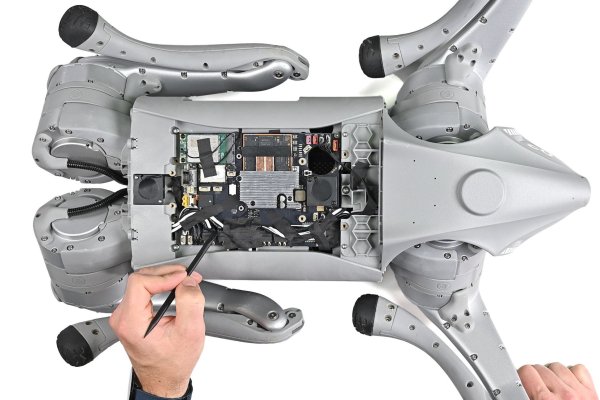HMD is bringing camshaft technology to smartphones.
Yes, you read that right. As recently as a week ago, if you’d told us 2024 will be the year that smartphones finally get camshafts, we’d have said you probably inhaled too many fumes working around engines. But we’re here to tell you (1) it’s true, and (2) it’s really cool. The HMD Skyline is an innovative, designed-for-repair smartphone that uses, among other things, an internal screw-driven camshaft to help speed up disassembly.

—a surprise to be sure, but a welcome one.
Promises, Promises
To make sense of what we’ve found inside the HMD Skyline, it helps to wind back the clock a bit. HMD made headlines in 2023 with their award-winning Nokia G22, which came with some solid repairability improvements and a commitment to more repairable designs in the future. “To make people want to repair and keep their phones, we have to make the experience of repairing more compelling than switching to a new one,” they said at the time. “So for our future devices, we are looking to both improve the ease of repairability, but also the experience of repairing your phone.”
That sounds great in theory, but to really move the needle on repairable design, smartphone makers need tenacity and innovation. These days you don’t have to look far to find OEMs releasing parts and service manuals and making incremental steps forward, and calling it a day—but HMD was talking a much bigger game.
And indeed, this Skyline is a new breed. Clearly designed from the ground up to prioritize user-friendly entry and no-nonsense servicing, it shows that HMD is taking their repairability commitment seriously and having fun doing it.
A Phone Set Apart
The first thing you’ll notice about the HMD Skyline is that it looks like a modern smartphone—that is to say, there’s nothing peculiar in the industrial design to give away the fact that there’s repairable hardware underneath.
On the bottom edge lies a single Torx screw—unassuming, chassis-colored, well-integrated into the design aesthetic. But try removing it, and you’re in for a surprise. With a little counter-clockwise twist, it pops up the corner of the back cover—just enough for you to slip a pry tool underneath.



Inside, it’s a simple but elegant mechanism: a screw-driven rotating arm, with a spring to pull it back down when released. Turn it, and its cam lobe pushes against a plate on the back cover, lifting it up just the right amount. If you want to surprise and delight a phone repair tech or a teardown engineer, this is how you do it.
And there’s more to like. The back cover uses adhesive for watertightness, but we found it was mild enough to yield to prying and slicing—no heat necessary. When you’re done, it reliably clips back together. In a world of flush-mounted, glued-down smartphone surfaces that stubbornly resist disassembly and may or may not go back together depending on how skilled you are at cleaning and reapplying adhesives, this is truly a better experience. (We’re still hopeful that one of these days, we’ll see a modern waterproof smartphone with reusable gaskets instead of adhesive—but for now, this is about as clean of a design as we’ve seen.)
I Screen, You Screen
The Skyline’s next trick combines two nifty design-for-repair concepts we’ve seen before, and it’s well-executed and makes screen repairs a breeze.
With the back cover removed, you’ve got access to an array of screws—and on close inspection, some of them are uniquely colored. On our teardown unit, they seem to be color-matched to the chassis.
You can see where this is going. Remove those color-coded screws, disconnect the display cable … and the screen falls obligingly out of the front. We’ve seen this sort of screw-mounted display construction before, such as on the Fairphone 5. So while it may not be entirely new, we love seeing a mainstream smartphone take inspiration from the most repairable products on the market.

And there’s one more repairability win on the screen: no adhesive to painstakingly remove and reapply. The Skyline uses a foam gasket around the display perimeter to help maintain its IP54 ingress protection rating. (If you want maximum ingress protection after a repair, you’ll likely still need to reapply the adhesive around the back cover—but this display design at least cuts down the workload for you.)
Repairable Battery Redux
Battery replacement in the Skyline is well-prioritized and approachable. If it looks a bit familiar, that’s because it is—so far as we can tell, it’s the same design developed for the Nokia G22.

That’s mostly a good thing. The battery remains adhered in place, but comes with a built-in plastic liner that you can pull apart by hand to quickly separate the battery from the chassis. Thankfully, HMD seems to have fine-tuned the strength of the adhesive such that this doesn’t really require much struggle, let alone heat or messy solvents. Once the battery is out, you can peel away the plastic from underneath.
The last step before installing a new battery is to clean out the adhesive residue that remains behind, and install fresh adhesive strips. This does require patience and some solvent (IPA or equivalent) to get right. Accordingly, on our smartphone repairability scorecard, the very best scores correspond to batteries secured with reusable fasteners or hard-shell batteries that you can pop in and out in seconds, with no adhesive at all. But if you must rely on adhesive, this is among the better designs we’ve seen.
The Rest of the Best
The remainder of the Skyline’s internals are fairly straightforward to navigate, with a pretty high degree of modularity. The daughterboard, underneath a modular loudspeaker, houses the USB-C port and microSD / SIM card combo tray; charging port replacements should be quick and affordable. The rear cameras connect to the exposed side of the motherboard, greatly speeding up access. Selfie cam and mechanical button repairs aren’t well optimized and require quite a lot of disassembly, but they’re about on par with other similar phones in this category.
There are no other shocking innovations in here—your phone probably doesn’t need a turbocharger or a limited slip differential, unless HMD finds a novel use for that, too. But no more shocking innovation is required when the opening procedure is this painless and the internals are thoughtfully laid out for repair. If you need to fix something in here, HMD has paved a nice path for you.

Repairability Score
The HMD Skyline scores an impressive 9/10 on our smartphone repairability scale. A clever entry, a repair-friendly screen, straightforward battery replacement, and public availability of parts and instructions all help land the Skyline near the top of the leaderboard.
HMD’s dedication to repair comes as no surprise here at iFixit, since we partnered with HMD to help prioritize repair on the Nokia G22, G42, and G310, as well as the HMD Pulse. In fact, we have guides, parts, and tools available for all of these devices on the HMD Repair Hub.





3 Comments
I looks like a very nice phone, downsides to me are only 2 years of android updates and bootloader is not unlockable so after the updates end I would end up with a nice repairable phone that doesn't get software updates.
SomeUser - Reply
Ah that sucks about the bootloader, was trying to find any info about it being unlockable Should be the next thing for EU to force the manufacturers to do because this is annoying.
Gelantious -
Yes, same. Bootloader unlock and re-locking is absurd to leave out of this device.
Jonathan Cross - Reply